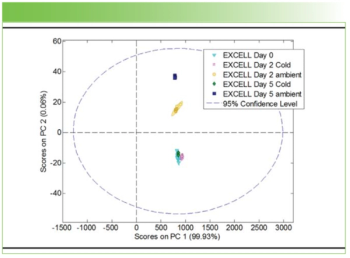
Advancing Sugarbeet Seed Germination Prediction: Harnessing Hyperspectral Imaging and Information Fusion
A recent study presents an innovative approach for predicting sugarbeet seed germination using the fusion of hyperspectral imaging and information analysis techniques.
Heilongjiang University researchers have introduced a breakthrough in predicting the germination of sugarbeet seeds using the innovative combination of hyperspectral imaging (HSI) and information fusion techniques. The study, published in Applied Spectroscopy, demonstrates the effectiveness of this nondestructive approach in accurately forecasting seed germination rates, paving the way for improved seed selection and cultivation practices in the sugarbeet industry (1).
Germination rate plays a crucial role in determining seed quality and successful planting outcomes. Traditional methods of assessing germination often require destructive sampling or lengthy observation periods. To overcome these limitations, the research team at Heilongjiang University proposed a novel nondestructive prediction method using HSI technology.
The study involved the application of hyperspectral imaging techniques, combined with germination tests, for feature association analysis and prediction of sugarbeet seed germination performance. Through the process of binarization, morphology, and contour extraction, hyperspectral imaging effectively achieved accurate segmentation of individual sugarbeet seeds without causing any damage.
To extract relevant information from the hyperspectral data, the researchers conducted a comparative analysis of nine spectral pretreatment methods. The standard normal variate-first derivative (SNV+1D) method was employed to process the average spectrum of sugarbeet seeds, resulting in the identification of fourteen characteristic wavelengths using the Kullback–Leibler (KL) divergence technique. The validity of these characteristic wavelengths was verified through principal component analysis (PCA) and material properties analysis.
In addition to spectral features, the study also considered image features extracted from the hyperspectral images using the gray-level co-occurrence matrix (GLCM). These features, along with the spectral features, were fused together to establish prediction models, including partial least squares discriminant analysis (PLS-DA), CatBoost, and support vector machine radial-basis function (SVM-RBF) models.
CatBoost is a gradient boosting algorithm that is designed to handle categorical features in machine learning tasks. It uses an innovative approach called ordered boosting, which incorporates the natural order of categorical variables to improve model performance. CatBoost also employs advanced techniques such as gradient-based sampling and symmetric trees to handle high-dimensional data and mitigate overfitting, making it a powerful algorithm for a wide range of classification and regression problems.
The results demonstrated that the fusion of spectral and image features provided superior prediction accuracy compared to using spectral or image features alone. Among the models examined, the CatBoost model yielded outstanding performance with a prediction accuracy of up to 93.52%.
By leveraging the capabilities of HSI and information fusion, the nondestructive prediction of sugarbeet seed germination becomes more precise and efficient. This advancement holds significant promise for the agricultural industry, enabling farmers and seed producers to make informed decisions regarding seed selection and optimizing planting strategies, ultimately leading to improved crop yields and quality in sugarbeet cultivation.
Reference
(1) Wang, J.; Sun, L.; Xing, W.; Feng, G.; Yang, J.; Li, J.; Li, W. Sugarbeet Seed Germination Prediction Using Hyperspectral Imaging Information Fusion. Appl. Spectrosc. 2023, ASAP. DOI:
Newsletter
Get essential updates on the latest spectroscopy technologies, regulatory standards, and best practices—subscribe today to Spectroscopy.




